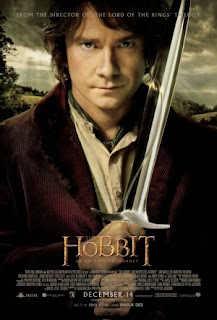With the release of The Hobbit yesterday, I knew this guest post would be of interest to many readers, who are parents of tweens and teens!
It’s only appropriate that fantastical genres of storytelling are often geared toward preadolescents, says writer Elayne James.
“It’s an extremely impressionable time, with the wonder of childhood firmly established and a dramatic transformation about to take place,” says James, author of “Destiny’s Call,” the first installment of the fantasy series “The LightBridge Legacy”.
It’s also not surprising that the “Lord of the Rings” movie trilogy. from 2001 to 2003. was one of the most successful in film history – and that fans are eagerly anticipating director Peter Jackson’s return to Middle Earth, with the release of “The Hobbit: An Unexpected Journey,” she says. In addition to being masterfully interpreted on the big screen, many of us were attached to the story from the books, which are often introduced during the middle school years. The narratives and personal experiences we have during preadolescence tend to stay with us more than those from other phases of life.
Researchers frequently cite pediatric neuroimaging studies, which show that during the ages of 11 and 12 our brain development is at a fundamental stage. A four-month journey across America at that age left an indelible impression on James. The trip culminated in New York City which became the launching point for the “Tolkien-esque” adventure in her most recent novel.
“Think about what you were learning at that age, your interests, the dreams of who you might someday become, all taking shape as your sense of self comes slowly into focus. Those things you loved as a child, whether it be drawing or basketball, music or dance, will likely be what brings you back to yourself later in life.”
James says there’s much to value about pre-teens experiencing narratives like “The Hobbit”:
• Preparation and a sense of identity: In “The Hobbit,” the prequel to J.R.R. Tolkien’s famous trilogy, Bilbo Baggins is the protagonist on a quest for treasure. Throughout his journey, he grows and matures, learning to accept the various aspects of his personality, including those that are less appealing. He must be brave at times, and rely on his common sense at other times. This is the journey pre-teens face when entering adolescence, and discussing it with them through the prism of Bilbo Baggins can be a wonderful teaching moment (as well as a potentially entertaining conversation).“What occurs during adolescence stays with you," says James, "so it's important to make sure children are exposed to positive stories and experiences.”
• Puberty, the universal “adventure: ” Everyone must endure that first plunge of major physical transformation with puberty. As the body is flooded with adult hormones, adolescents must rely on their still-developing young minds to deal with mature situations. This can be a difficult, even frightening, time and, of course, kids are never the same after puberty. Baggins’ ordeals show children that high adventure (including puberty!) and the most important experiences in life, leave us forever changed. There may be frightening moments, times they grieve what they’re leaving behind, but ultimately, the journey is rewarding.
• There and Back Again … This is not only the expanded title of Tolkien’s “The Hobbit,” it is also a reoccurring theme in James' career as a writer. After reading “The Hobbit” at age 11 and chronicling her own adventures across America a year later, she decided to create her own stories. "Without Tolkien's invitation to Middle Earth," she says, "I might have followed a very different path. Tolkien made me view my own life as an adventure and I believed that I, like the unassuming, shy little Hobbit, could succeed, even against all odds." Returning to New York as an adult, and as an author, she claims, brought her journey full circle.
About Elayne James
Disclosure / Disclaimer: I was offered these post free of charge, from News and Experts, for blog posting purposes, on this blog. No other compensation, monetary or in kind, has been received or implied for this post.

Comments
Post a Comment